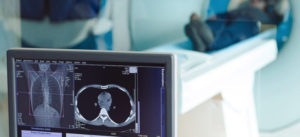Advancement in MRI Technology: A Glimpse of What the Future Holds for Medical Imaging
Since the invention of MRI, technology has never stopped improving in its work and shifting to continuous process improvement, proving beneficial for both patients and doctors. Recent innovations ensure that imaging will be much clearer and speedier, thus allowing for more accurate and speedy diagnoses. With new designs and software being worked out by researchers and engineers alike, exciting possibilities may emerge in the future of MRI.
Medical imaging continues to become more sophisticated as a result of advancements in scanner design and improved processing techniques. Not only do such improvements reduce the time required to scan, but they also further improve the possible detail in images that can prove critical in patient care. Such changes will likely be reflected in many fields of medicine.
It is with these technologies that enhanced patient outcomes become more possible as the healthcare industry accepts them. Advancements in MRI could only lead to earlier diagnosis and more personalized treatments; hence, their importance in contemporary medicine.
Key Takeaways
- New designs in MRI scanners enhance imaging clarity.
- Improved processing techniques speed up scan times.
- Advancements lead to better patient outcomes and diagnostics.
Innovations in MRI Scanner Design
Recent innovations in the design of MRI scanners enhance image quality, comfort for the patients, and access to the modality. Newer technologies considerably improve performance while overcoming a number of limitations of earlier designs.
High-Field MRI Systems
The high-field MRI system has a higher magnetic field strength, usually 3 Tesla or greater. High-field scanners are very fine machines that provide comprehensive images with higher resolution than the conventional 1.5 Tesla models.
High-Field MRI Advantages:
Improved Clarity/Detail-Improved diagnosis due to better clarity/detail. Faster Scanning Times-Shorter exams reduce patient wait times and discomfort. Wide Range of Applications Useful in the most complex applications, ranging from neurology to oncology. These designs require specialized shielding to minimize interference and are, therefore best utilized in hospitals and dedicated imaging centers.
Open MRI Developments
Open MRI designs have favored the use of patient-friendly features. Generally wider than the conventional closed MRI, an open system has the added benefits of soothing anxiety in claustrophobic patients.
Key Features:
Comfort-Increased comfort allows patients to feel less restrained and more relaxed.
Larger patient access-involves open designs, which accommodate a greater range of body types.
Increased versatility-makes them handy for several imaging needs, ranging from pediatric to geriatric patients.
While open MRI may have low field strength, the image quality has improved with advances in technology, making them more clinically relevant.
Portable MRI Machines
Portable MRI machines are becoming quite functional for scanning a variety of environments in emergency rooms and also in remote locations. Because of their compact size, it’s now easy for the doctor to bring imaging to a patient.
Key Features:
Ease of Transportation: Light-weighted design for easy mobilization and setup to operate at a variety of locations.
Rapid Imaging: This provides real-time imaging in urgent cases to improve patient outcomes.
Cost-Effective Solutions: A reduction in installation and operational costs will make them more accessible to small facilities.
These are indeed huge steps in expanding the access of MRI technology and making necessary imaging services available where needs are highest.
Imaging Software and Processing Breakthroughs
Recent advances in MRI studies encompass software and processing methods developed. The works result in improvements in the image quality, scan time, and diagnostic capabilities. The contributions have been categorized under three major headings: Artificial intelligence, advanced algorithms, and real-time techniques.
Integration of Artificial Intelligence
Artificial intelligence has become a new revolution in MRI scans. AI algorithms can analyze images more quickly and accurately than any human. They help the radiologists by showing them the probable abnormalities, such as tumors or other issues related to them.
AI systems learn from enormous amounts of input data. This training helps in recognizing patterns and hence their predication. Therefore, by integrating AI, healthcare professionals can reach quicker and more relevant diagnoses, hence coming up with improved outcomes.
Examples of AI applications in MRI are automatic segmentation of images and detection of abnormalities. These help to reduce the burden on radiologists since they’re able to speed up review processes.
Advanced Image Reconstruction Algorithms
Advanced algorithms are, of course, the lifeblood of any MRI image enhancement. New reconstruction techniques improve clarity and detail with less noise. This means doctors will be able to see more accurate images that will, in turn, lead to better assessments.
One popular technique involves something called compressed sensing. It allows for high-quality images with fewer data points, hence reducing the time required for scanning and making MRI more convenient for the patient.
The other is parallel imaging, which involves accelerating data collection. It employs multiple coil channels for simultaneous data acquisition. This makes fast scanning with no loss of image quality possible.
Advanced algorithms like these give added leverage to the whole view of efficacy in MRI technology.
Real-time Imaging Techniques
The real-time imaging techniques are indeed significantly altering the way physicians perform MRI scans. These techniques allow immediate feedback during the process. During any interventions, it enables the physician to observe changes taking place in a real time.
Another well-known modality is real-time fMRI. This measures the activity of the brain as it occurs and helps in the investigation of regions of the brain that may be involved in movement, speech, or cognition.
Real-time imaging enhances the comfort of patients by reducing the length of time they spend in the scanner. Patients be more comfortable because they can see results right away. This also contributes to a reduction in the general anxiety associated with the test.

Also Read :
